10 of the Best Destination Restaurants
From new Nordic to progressive Indian, these are the places to taste exquisite ingredients, in luxe locations, all from visionary founders, says Mark Sansom
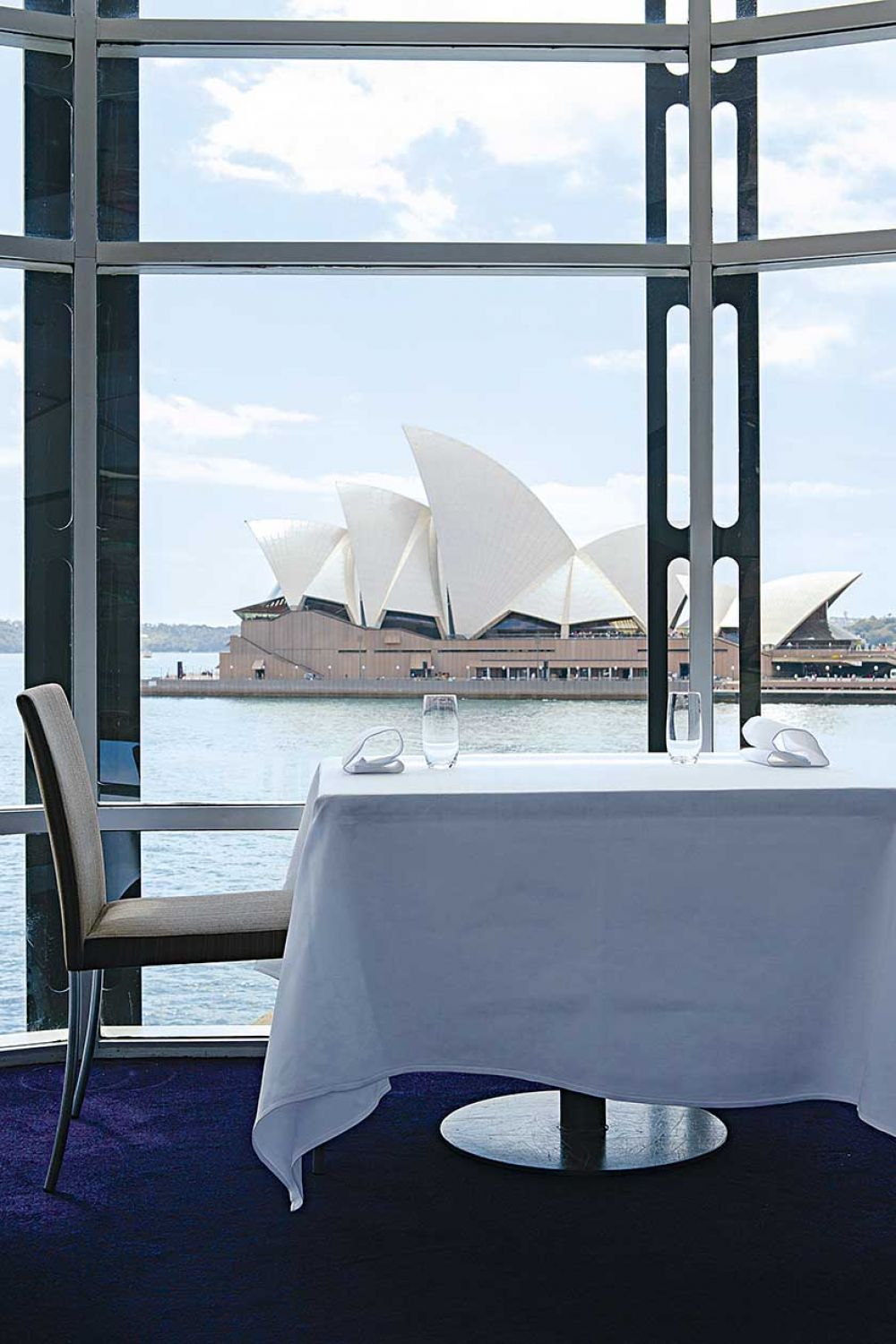
From new Nordic to progressive Indian, these are the places to taste exquisite ingredients, in luxe locations, all from visionary founders, says Mark Sansom
We’re starting with our most extreme destination restaurant. Fäviken in northern Sweden sits within a 8,094ha hunting estate the size of the Benelux region, surrounded by snow, trees and little else. It takes the best part of a day to get to, and there’s no chance of hailing a cab. But this isolation adds to the theatre. Once you arrive at Magnus Nilsson’s 12-cover restaurant, you’re invited to use the sauna, before settling into a sparsely decorated twin room and making your way to dinner for a prompt 7pm (there are tales of tardy guests being turned away, which must be something of an anticlimax). Its location influences the cuisine. Everything is local (sometimes foraged) and fermented, salted, pickled or bottled. The set menu is 30 courses, with a stream of nuts, pulses and berries, before signature dishes of trout roe served in a crust of dried pig’s blood and pig’s head with herring aged for three years. It’s a meal that will test and intrigue in equal measure. Well worth the trip.
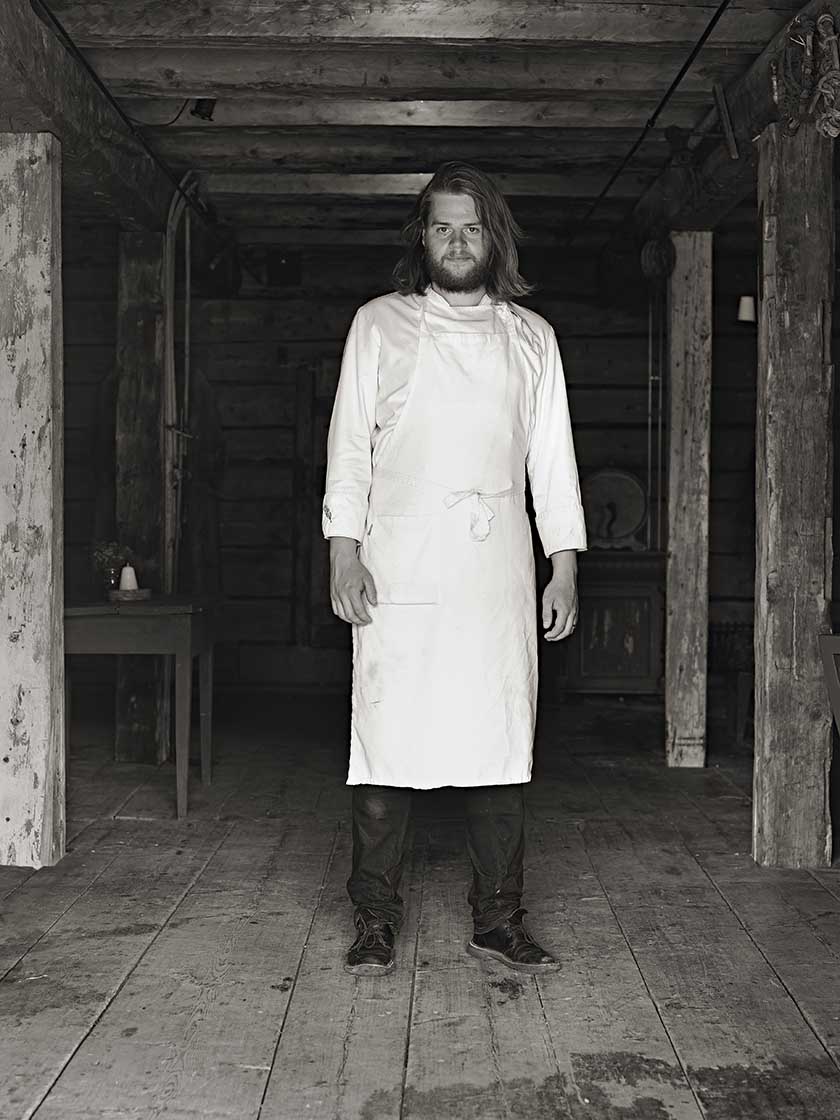
THE DETAIL Tasting menu, £175. With wine, add £138. Bed and breakfast costs £200 (favikenmagasinet.se).
This restaurant couldn’t be more Scandi if it tried. The pared- back design is matched only by the restraint on the plate, with nothing superfluous on wall or table. It’s regularly ranked as the best restaurant in the world, with chef René Redzepi hero- worshipped by travelling gourmands, who make pilgrimages from far and wide. His tasting menu stands at 17 courses, starting modestly with a single salted loganberry (when in season), moving to a crescendo of roasted turbot and bitter greens, celeriac and mushroom, via aebleskiver, a Danish pancake made with bee larvae and glazed with fermented crickets. It has helped elevate Nordic cooking in the eyes of the world. The kaleidoscopic wines are as interesting as the food with whites, pinks, reds and oranges on show; generally organic and unfiltered, and always a sensation on the palate.
THE DETAIL Tasting menu, £168. With wine, add £110, noma.dk.
The only restaurant in our list from the Basque city that brought the world molecular gastronomy, Mugaritz is the brainchild of Andoni Luis Aduriz. A softly-spoken, almost retiring character, his plates reflect his personality: measured, restrained and with as few conflicting elements as possible. The modestly decorated tables are laid with a plate, broken in two and pieced back together. It’s more than a subtle hint that what’s to come will be a master class of deconstruction and reconstruction. No course is much larger than a mouthful. Enough to excite the palate, make its mark and be gone for ever more. Grapes made of melon with pink peppercorn pips start the show, before a muted course of spices, crushed in a mortar and doused in a smoky vegetable broth. It’s a real thinker’s restaurant; not every course is meant to wow, meaning it’s received some rather inflammatory reviews. If theatrics and fireworks are what you’re after, you’ll walk away nonplussed. If beautifully restrained molecular cooking is your thing, you’ll talk about Mugaritz until the day you die.
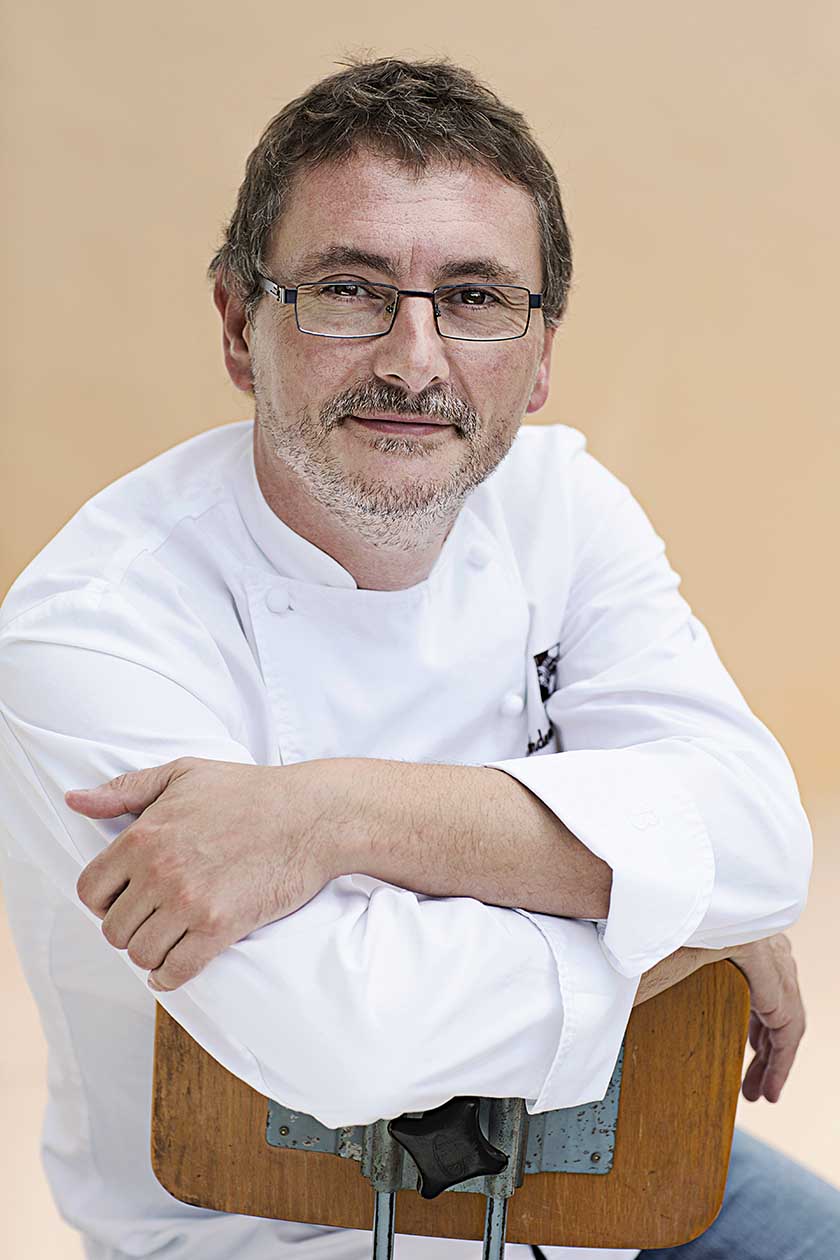
THE DETAIL Tasting menu, £137, mugaritz.com.
Everyone likes pasta. And Osteria Francescana serves the best in the world. The restaurant’s tagliatelle with ragu with veal jus is a dish you’ll never forget, attempt to recreate and always fall short of. Now 20 years old and set in Modena’s back streets, the restaurant’s menu is a homage to Massimo Bottura’s region. Nowhere is this better exemplified than his Five Ages of Parmigiano Reggiano, a celebration of the local flagship ingredient. It’s a soufflé made from cheese aged for 24 months; a mousse with cheese aged 30 months; a cream aged 36 months; a wafer aged 40 months; and broth made from a rind of a 40-month-old cheese. Each element is served at very precise temperatures to deliver a real umami hit. As you’d expect, securing a table is difficult, to say the least.
THE DETAIL Tasting menus from £125. With wine pairings, add £81, osteriafrancescana.it.
Anyone au fait with the London dining scene will know the influence Peruvian cuisine is having on trends at the moment. Eight high-end restaurants have opened in the past three years, collecting Michelin stars like they are going out fashion. The blend of citrus- heavy flavours, punchy chilli and healthy raw fish chime with the capital’s appetite for freshness, flavour and even fitness-friendly foods. Though the restaurant doing it better than anywhere else in the world sits in the pumping heart of the Peruvian capital, serving food that’s breathtaking and beautiful in equal measure. Virgilio Martinez’s menu takes diners on a tour across Peru’s wild and varied landscape. It starts in the Andes, where the first potato crops were harvested, west through the mountains where cacao was found and to the ocean whose cold waters breeds more prawns than anywhere else on the planet. Of course, the ceviche (raw fish ‘cooked’ in citrus) is predictably delicious, though the real interest comes in plates containing cushuro, a caviar-like bacteria found in the mountains after a rainstorm and airampo, a bright magenta member of the cactus family that’s as ugly as it is intriguing to eat.
THE DETAIL Tasting menus from £60, centralrestaurante.com.
This is very much a tale of three brothers. One chef, one pastry chef and one sommelier. They opened their restaurant in 1986 next door to their parents’ bar, Can Roca. It’s as post modern
as you’ll find, with the chefs asking all manner of existential questions with every dish. An insight into the mind of Jordi, the pastry brother, goes a long way to explaining the restaurant’s food philosophy: ‘Why does there have to be a reason why? There is no need for so much reflection,’ he muses. ‘Freedom lit the fuse, and why not?’ As close to Samuel Beckett as you’ll ever find over food. On each table three stones are set to represent each of the brothers. Almost immediately, you are presented with five amuse-bouches, each representing a cuisine style from a different part of the world. Frozen fish stock with lemongrass from Thailand, or pickled vegetables with plum cream from China. Memories of a Bar in the Suburbs of Girona is their most complex: squid, anchovy bone in tempura, omelette and kidneys in sherry. Thought provoking, complex and utterly delicious.
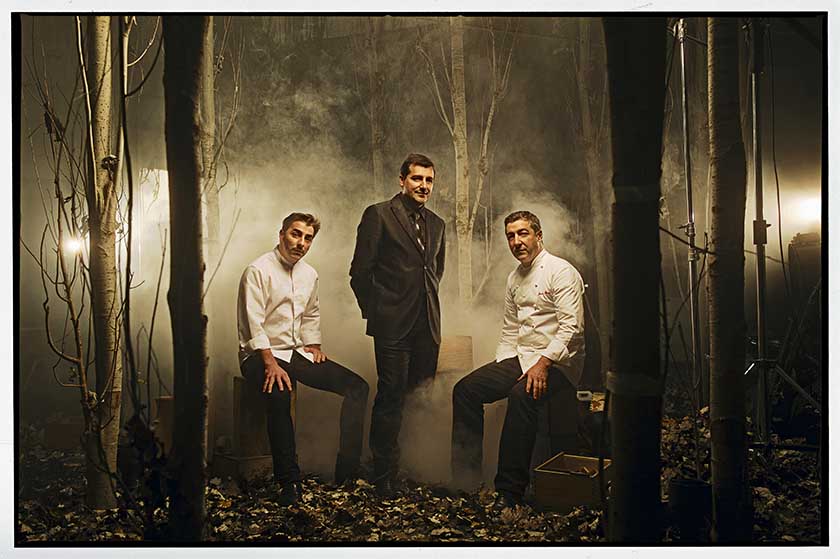
THE DETAIL Tasting menus from £125. With wine pairings, add £55, cellercanroca.com.
Food with a view can often come with a licence for a chef to be lazy. Here, with one of the most iconic vistas in the world overlooking Sydney Harbour Bridge and its Opera House, Peter Gilmore shows industry levels more than befitting of the scenery. His plates are nothing short of art. The sea pearls – tuna sashimi, sea scallop, crab, smoked eel and octopus – comes served in
an oyster shell and shows a dazzling array of textures. Runny melds seamlessly with crisp; sharp blends with soft and dances on the palate. Like the rest of Australia, the cuisine draws on its multicultural heritage. Japanese flavours are big here, evidenced on the tasting menu by the ever-present Wagyu and the divine black lipped abalone with shiitake, chawanmushi (Asian egg custard) and sesame grains. The staff are one of the restaurant’s greatest assets; unobtrusive and mindful not to interrupt your experience with the food. The only caveat? A rather garish carpet. But with views like this, you won’t be staring at the floor.
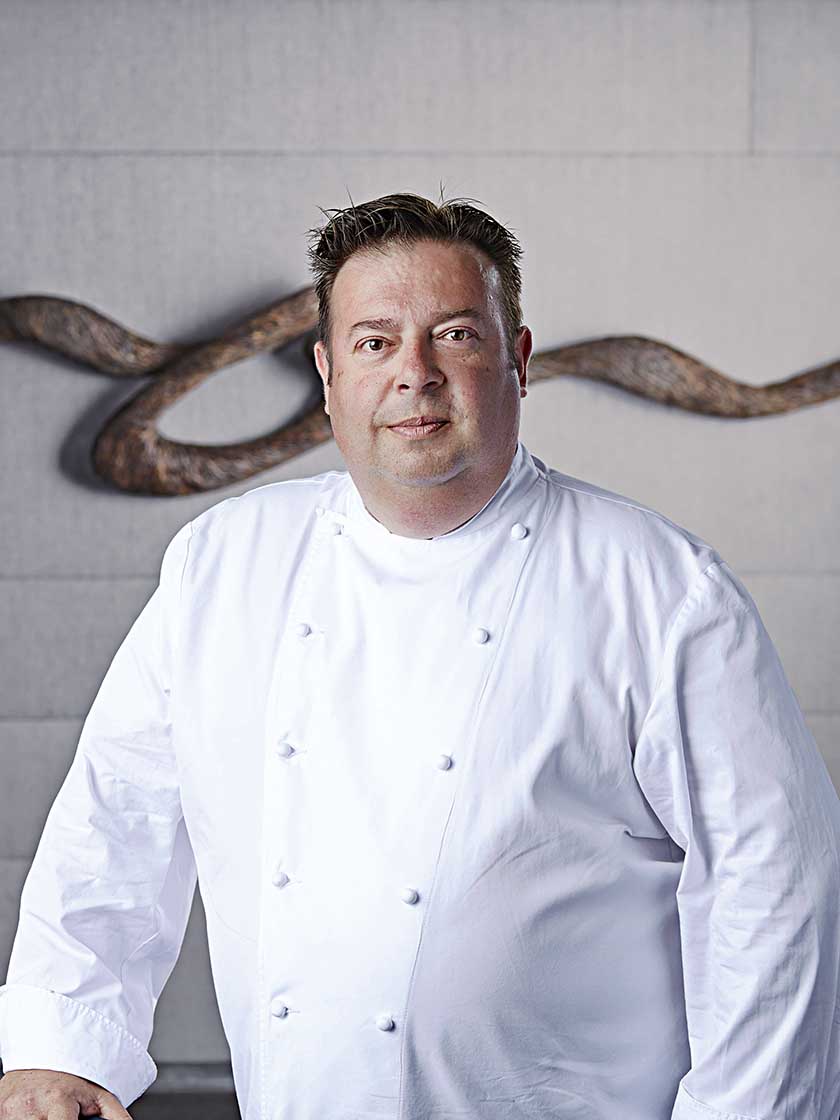
THE DETAIL Tasting menu, £113. With wine, add £50, quay.com.au.
Few chefs, even on this list, have the restaurant education of Gagnaire. Starting at the age of 15 with the legendary Paul Bocuse, before working for the likes of Alain Senderens and Michel Bras. Now, his worldwide string of restaurants total 16 Michelin stars, more than any chef in the world and with all that globetrotting comes his love of fusion food. His tasting menu reads
as a greatest hits of international cuisine: king prawns, madras curry, lemon caviar, piquillo pepper, pink grapefruit, avocado, radishes and ewe veloute blends no fewer than four different nations to brilliant effect, while The Urchin takes sea urchin tongue and mixes it with pink turnips, baby onions, white port and seaweed butter to create a dish that is utterly unforgettable. Sure, this kind of cooking doesn’t come cheap (it’s the most expensive in our top ten), but you’ll be talking about this experience for far longer than any holiday of a similar value, we promise.
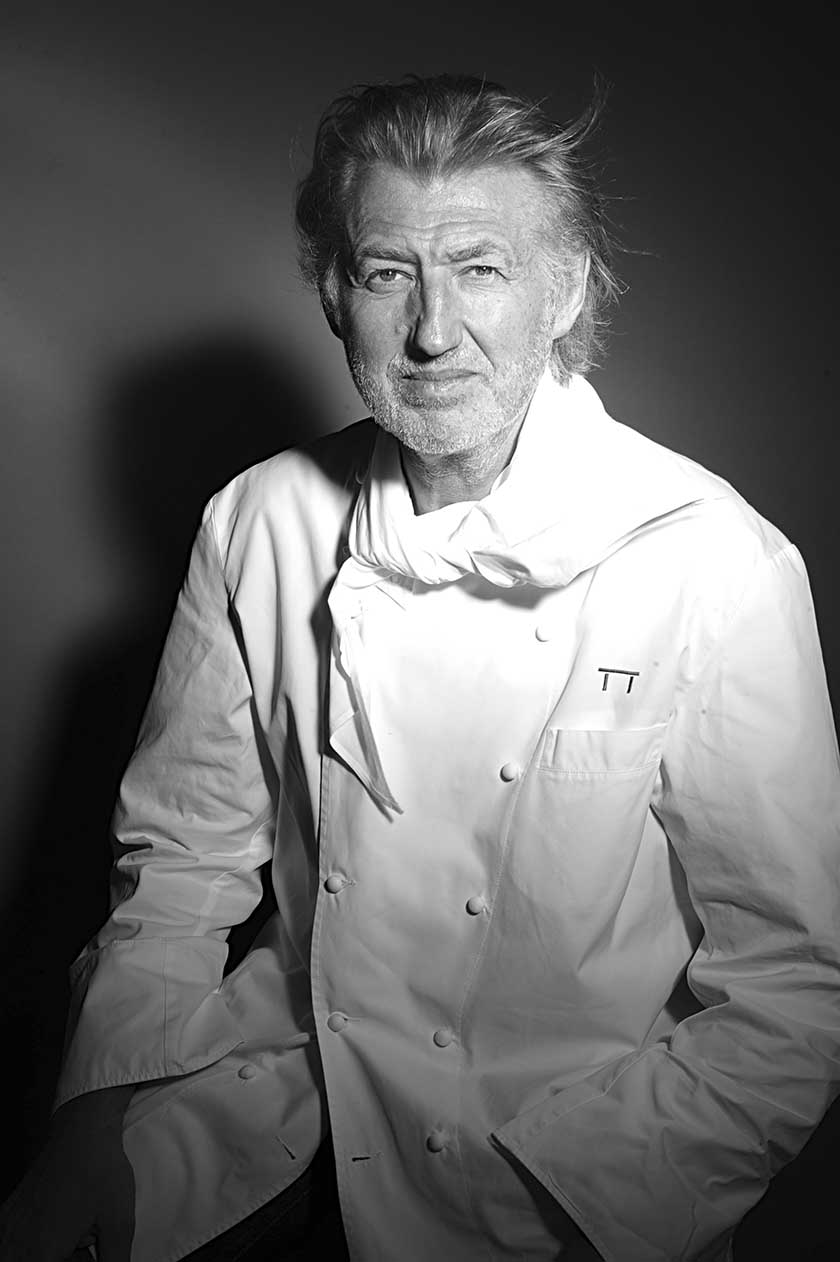
THE DETAIL Tasting menu £230. With wine, add £100, hotelbalzac.com.
As culinary CVs go, Gaggan Anand’s could get no better.
He was the first Indian chef to undertake an internship with Ferran Adrià’s research team at El Bulli, before working at some of the very best Indian restaurants in the world. From there he chose to open the world’s finest Indian in Bangkok. The dishes and their respective names could be fresh out of Willy Wonka’s factory: Chocolate Eyeball (poppadom with fresh herbs, garam masala and pomegranate), Liquid Salad (cucumber juice jelly with beetroot and carrot purée) and Mom’s Love (carrot porridge with saffron and silver leaf ) are some of the more outre. But while they sound outrageous, the flavour profiles are sound. Quite clearly a student of the great Adrià and the only chef practising his principles to such an extent with Indian food anywhere in the world.
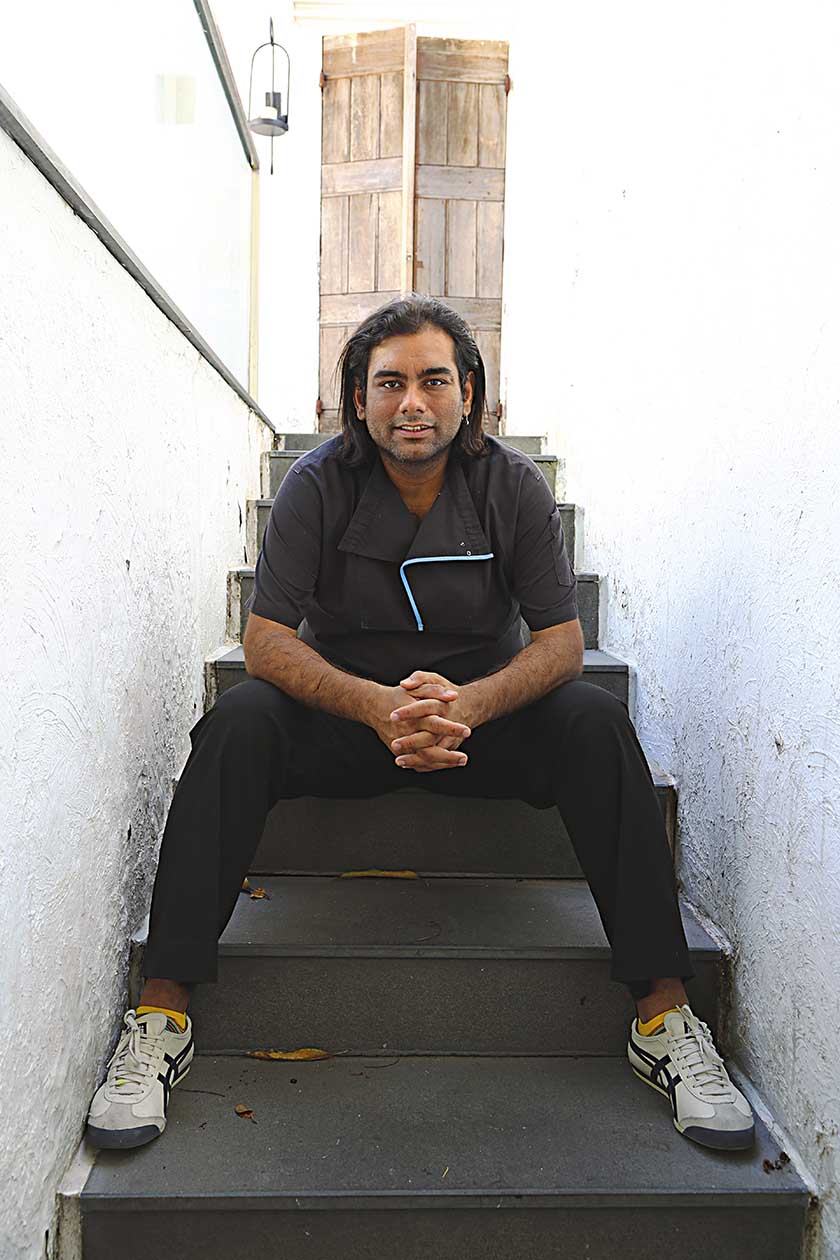
THE DETAIL Tasting menus from £46, eatatgaggan.com.
Thomas Keller’s flagship restaurant is an American incarnation of what Americans envisage a fine dining restaurant should be: the tablecloths are starched to within an inch of their fibres, the cutlery is polished to a reflection worthy of a cruise liner and the staff glide around the restaurant with their noses as high and backs as straight as a Victorian debutante. The experience is fine dining, to the power of ten. Keller’s own style comes by way of traditional France. Educated in Paris and recognised by the French with the award of Chevalier of The French Legion of Honor (the country’s highest decoration), he’s regarded as the best American chef on the planet. His food is as stylised as his restaurant. A canape of black sesame with salmon tartare and crème fraîche, followed by his signature Oysters and Pearls, a sabayon of pearl tapioca with Island Creek oyster and white sturgeon caviar, are what the diners flock to try.
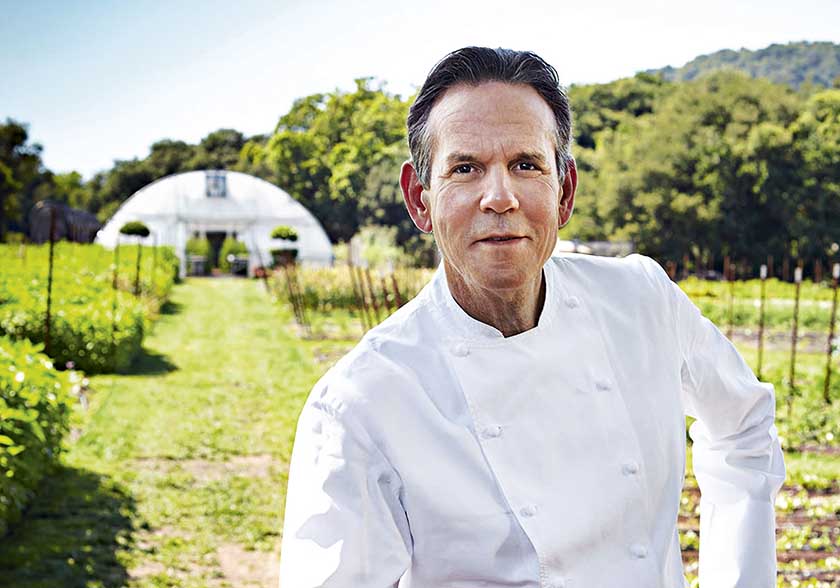
THE DETAIL Tasting menu, £191, thomaskeller.com/tfl.
Subscribe and view full print editions online... Subscribe